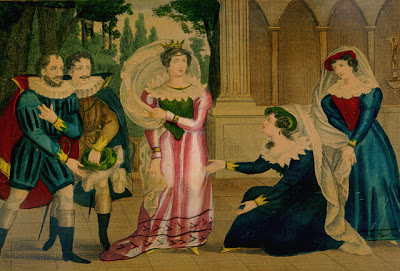The renaissance age in Europe is undoubtedly an unforgettable era for the people of the western world. It was the era, when a great cultural and artistic rebirth was witnessed in the society. A stunning evolution took place in various fields, such as paintings, sculptures, renaissance costumes and so on. Besides, the lifestyles of that era became the source of inspiration of the modern times also.
An interesting thing about that era was that it was full of diverse cultures. A number of cultures were present during that period, which had their unique lifestyles. The commoners of that era used to constitute the mainstream society. Besides, the communities of serfs, royals/nobles/aristocrats and pirates were some other communities, which were making the societies.
Commoners: They were the modest people of the society. They gained the huge interest in art and culture, which was reflected in his clothing styles also. The styles of these people were very much inspired with gothic and Germanic traditions. In the renaissance age, the massive clothes became prominent during the renaissance age. The popular women’s costumes of that era include linen chemises adorned with lace edges, lengthened breaches and heavy gowns etc. On the other hand, puffed trunk hose, padded doublet and balloon sleeves were the outfits of the men during that period. On the other hand, they had the healthy eating styles. Some of the eatables they would consume included roasts, soups, pastas, pastries and cheeses etc.
Serfs: Serfs, otherwise known as peasants, were the labor-class people of that era. They would work on the lands of the lords. Most of them would work on the lands of the lords, and they had to do hard labor in order to pay the dues. Sometimes, they also had to pay the rent in the form of money to the lords, apart from the labor. The clothing styles of these people were simple. They would wear a blouse that would be fastened with leather belt round the waist, and an overcoat or mental which was made up of thick woolen material.
Royals/Nobles/Aristocrats: These were the upper class communities of that era. They would wear the dresses beaded with the jewels. Moreover, their outfits were extravagant, many of which are fashion-statements for today’s people also. The dresses of Queen Elizabeth I were the best examples in this regard. Besides, they would eat the luxurious foods.
Pirates: Mainstream pirates were not part of lawful communities. They would wear the disorganized styles of outfits, which they would loot from the ships. The pirate clothing developed during that era is also the fashion statement of the people of today’s scenario. Their lifestyles were very much like the sailors. They would eat fresh veggies, eggs, meats and cheeses. Moreover, dice, cards, dance and singing were the leisure activities of these raiders, which they would use for fun. There was another class of pirates also, which belonged to the lawful raiders authorized by the government. Such raiders were known as privateers, and their work was to loot the treasure ships of the enemy nations. The privateers would live the lifestyles like nobles as they had the full support of the kingdom.







